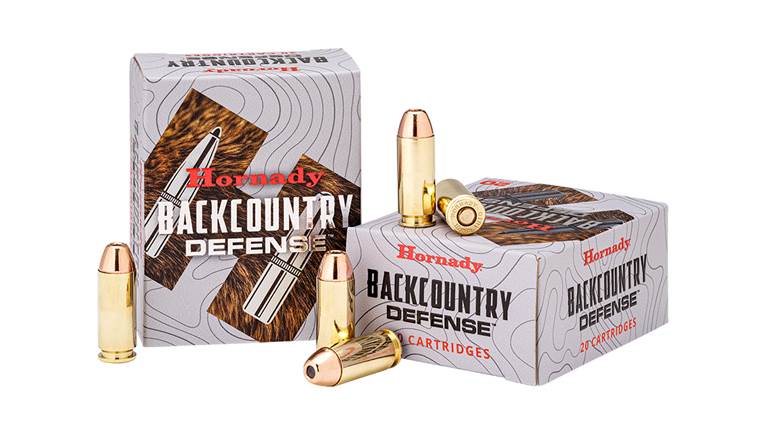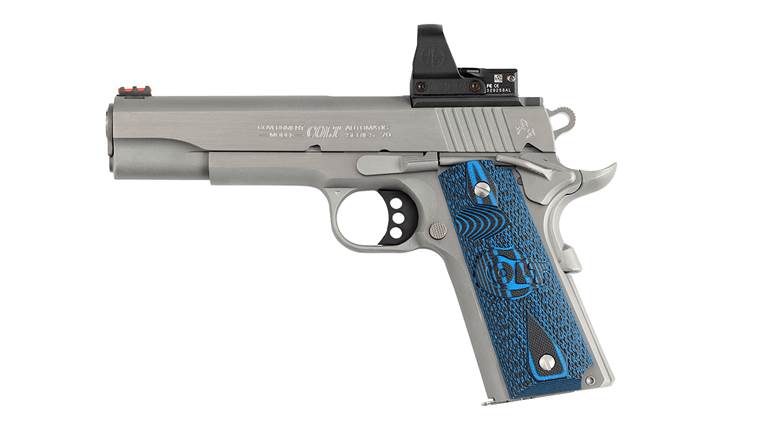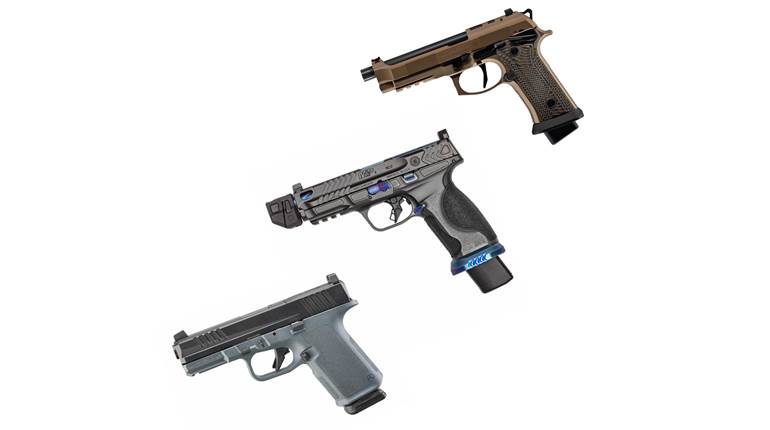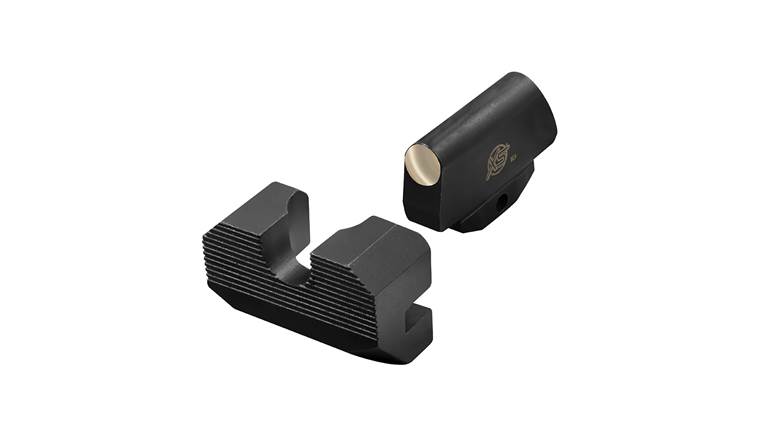This review of the Colt Python appeared originally in the March 2020 issue of American Rifleman. To subscribe to the magazine, visit the NRA membership page here and select American Rifleman as your member magazine.
It was 1955, and the American arms industry had shaken off the constraints of wartime production and returned to satisfying the police and sportsman markets. In the town of Hartford, the iconic, onion-domed Colt plant on the Connecticut River shifted over from building Parkerized military M1911A1s to making polished-blue civilian models.
But it was Col. Colt’s most significant invention that still kept hundreds of skilled workers busy—as they had been for more than a century. This was revolver country. For a time, the company name itself was synonymous with that product. And despite strong competition, Colt remained a force in revolver development and production.
When the company announced another wheelgun that year, it is unlikely that it knew the new model would not only enhance its reputation for quality but wildly expand it. Its name was Python, and for the following 50 years, it would reign as the classic “snake gun” of all time.
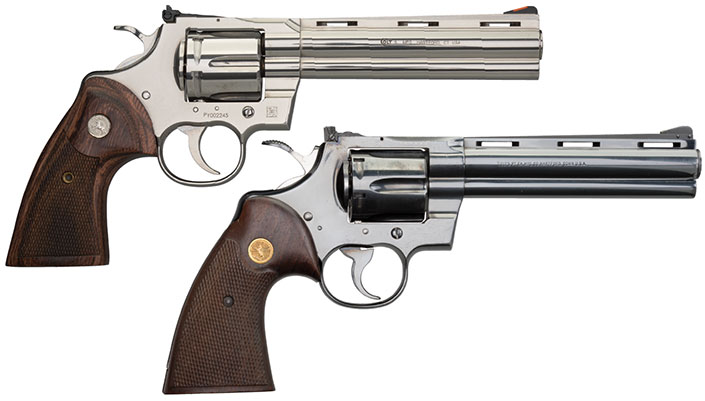
No regular-production handgun ever got so much detailed attention as did the Python. It was put together by the most skilled technicians in the Hartford factory. These were experienced Yankee craftsmen who took a bare frame and carefully fitted together oversized parts—made in house—using the files and stones on their benches.
Before applying a finish of deep, lustrous blue, the premium revolver’s frame and barrel were polished on special walrus-hide wheels. All things considered, the 1955-vintage Python was a superb firearm that earned a great reputation for quality and appearance. It always commanded a hefty price tag, but, as the years wore on, the guys who built it gradually faded into retirement—and they were next to impossible to replace.
The original Pythons went out of production in 2005, and remaining examples in mint condition have gone for crazy prices at auction. The advent of online auctions has driven prices even higher, so much so that current enthusiasts are advised to not fire a “minty” specimen. The old Pythons have become icons, or, in the vernacular of the gun community, “safe queens.”

I’m sure that Al Gunther, Al DeJohn and the other Colt gunmakers of the 1950s would be flabbergasted by this turn of events. They were not trying to build a tribute to the Colt revolvers of days past or to guncrafting in general. They were after the best possible working revolver they could build, and they intended it to be fired a lot.
I believe they succeeded admirably. Look at it this way—only a small percentage of original Pythons are involved in this crazy market of perfect, unfired guns. The majority are still in admittedly limited use or have permanent homes with handgunners who simply keep them as a matter of personal choice. They might have the dents, dings and scratches from hard use, but they still hit what their owners aim at.
As much as the extreme Colt aficionado might deny it, though, the most appealing aspect of the Python was its style. Much of that appearance is in the barrel. A straight-taper tube with full-length cylindrical underlug, the Python barrel has a gracefully angled ventilated rib on the top side. It’s a handsome arrangement, and the muzzle end of the gun has a pugnacious appearance that visually smacks of serious business.
But style is one thing, and commercial viability is another. We simply can’t afford to build revolvers by hand in this enlightened age. But the good news is that we now have more accurate and less expensive ways to manufacture a fine handgun—even one worthy of the name Python.
So that is what Colt’s Mfg. Co. has done in this 20th year of the 21st century. Just before the SHOT Show in January, the great American gunmaker announced the return of its storied revolver—remarkably in the same size, and intended for the same roles as the original. The Colt Python was back!
Paul Spitale, the energetic honcho at Colt charged with the Python’s rebirth, pondered the legendary .357 Mag. revolver’s re-introduction for several years before his engineers worked through the process of how to build a true Colt Python that retains that classic style, but avoids some of the same common problems associated with Colt’s early double-action revolvers.
The all-stainless steel guns are now produced in two barrel lengths. The 6" revolvers are dimensionally nearly identical to the earlier guns. And, in order to accommodate Canadian regulations, the shorter model sports a 4¼" barrel rather than the original four-incher.
It is obvious that every dimension and contour on the new gun closely follows what was used on the original. I would guess that maybe one guy in 50 could tell the differences between the two stainless Pythons and originals from across a room. I can also confidently state that the newest version feels virtually the same as the 1955 model.

There are small differences in several places. The top, front corner of the frame, where the lines of the barrel flow into it, are a little different. On the hammer, the cocking surface is laterally serrated and not checkered. And the muzzle crown is a little different.
Although the Python was never seen as flimsy, the engineers added some 30 percent more steel at the topstrap, apparently in anticipation of today’s high-performance ammunition. Also, the stocks are a bit different. They’re laminated wood, light brown in color and with a checkering pattern like those used on early guns, termed “Type 2” by collectors. Interestingly, the new stocks will swap with the old—I personally confirmed as much. I also have it on good authority that both versions share holster compatibility.

Pythons are rather heavy handguns, and a glance at the gun’s profile will tell you something about how the weight is distributed. The heavy barrel underlug shifts the weight forward. That feature, combined with a sweeping curve to the gun’s butt section, makes the new version one of the more pointable revolvers ever offered. As I examined it, I found it to be a fine-handling wheelgun—and my curiosity as to how it would shoot increased as the time to take it to the test range neared.
But before I share those results, we need to look at the one problem that has bedeviled every handgunner who ever subjected a double-action Colt to heavy service. For most of the 19th century, Colt revolvers were simple single-action designs in which the user thumbed the hammer back and then pressed the trigger to fire. From Paterson to Peacemaker, it worked very well.
But when the company began to see the basic shape of battle in what would turn out to be a very tumultuous 20th century, it began to look for an improved model. In 1889 it introduced its first widely distributed double-action, solid-frame revolver. A whole series of related guns followed in various sizes—Pocket Positive, Police Positive, Police Positive Special, Official Police and New Service. All of these guns used scaled variations of the same double-action trigger system.

It was not really a first-rate trigger system, and it had a tendency to go out of time. This means that the alignment of each of the six chambers with the breech end of the barrel was not perfect. When fired in such a condition, things tended to get worse—quickly. The gun might shave lead off the bullet, and accuracy suffered.
For an adept and well-equipped armorer/revolversmith, it is possible to correct such a problem. But for every guy who can do Colt double-action trigger jobs, there are two dozen who can’t. It proved to be a thorny problem for anyone who used old-style Colt revolvers. The best revolver guy I know, Hamilton Bowen, once referred to an action job on a double-action Colt as a “Gordian Knot” of complexities.
But that was then, and this is now. According to Spitale, “It wasn’t just about bringing back a Python, it was always about improving the consumer’s experience with the new Python. We wanted it stronger, we wanted a better and smoother action. Our ability to work with and cut steel has improved greatly since the Python was first introduced in 1955, and we wanted our customers to see and feel those improvements.”
Removing the sideplate from the Python reveals those improvements rendered in metal. While the action’s components are similar in shape and location relative to original Pythons, they are noticeably larger, polished and free of tooling marks. The mainspring, especially, appears to be incredibly robust and makes the original’s component look anemic by comparison, like a clothes hanger or large paper clip had been pressed into service.
One distinct difference in the new Python is the inclusion of a separate cylinder-stop mechanism, which resides above and just forward of the trigger, similar in design to those of Smith & Wesson’s revolvers. Finally, shooters will certainly feel Colt’s improved machining as they pull the trigger; the lockwork and engagement surfaces are manufactured to much tighter tolerances than were possible in the older hand-tuned guns, and the new Pythons exhibit remarkably smooth trigger pulls that are consistent from chamber to chamber.
I received two new Pythons to review for this story and, indeed, both had excellent (maybe outstanding) triggers. The single-action pull is a bullseye shooter’s dream. With the hammer cocked, the shooter builds pressure to just under 3 lbs. Nothing disturbs the sights—there is no perceptible motion from the gun at all. The break is perfectly clean—it’s really sweet.
But the double-action trigger is likewise impressive. Here, the rearward stroke is extremely smooth, with no stacking of pressures and no glitches, bumps or squeaks. Shooting informally in double-action mode, I felt that the two new Pythons were as good as any Python I had ever fired and better than most of them. It will take some hard use with magnum loads to find out if the action retains its new-gun feel. I really like the system and I hope it holds its superior edge.
Back in the ’70s, we had a great PPC league in California, and many police officers traveled all over the state for weekend matches. The cheapest way to get a match-quality competition wheelgun (nobody used semi-automatics then) was to buy a Python barrel (about $35) and graft it onto a K-frame Smith & Wesson .38 Spl. frame. The result was called a Smython.
They shot with great accuracy, and I am sure that most of these guys who used them didn’t fully understand why. All Colt Pythons have a barrel with a 1:14" twist, which is just about perfect for long-shank bullets at low velocity. Colt’s 2020 Python revolvers have a current-production version of that barrel.
For the purposes of making as thorough a comparison as possible, I borrowed two original Pythons, a six-incher from 1968 and a 4" from 1979 to shoot against their respective new versions. Both of the old guns were made of blued carbon steel and exhibit very little wear. Everything I fired through them I also fired in the shiny new guns.
The results are tabulated nearby. Frankly, I was a bit startled. While I have always had great respect for the accuracy of the Python, I did not expect the 2020 models to shoot so well. No group went over 2" and a few were under 1". That is excellent accuracy and comparable to that of the earlier guns.
Colt took a bold step when it developed today’s Python. It is not a hand-fitted or hand-finished revolver as were the originals. Therefore, there is an unfair comparison implied in anything I have to say about the quality and performance of new versus old. Regardless, the new Python is a fine revolver that shoots as well as it handles. It is indeed a handgun worthy of its progenitor’s name. In fact, it’s a handgun worthy of two of the biggest names in the world of handguns—Colt and Python.


Related Reading
The Keefe Report: The Colt Python Is Back!
SHOT Show 2020: The Colt Python
SHOT Show 2020: Is There A Problem With the Colt Python?
Colt Addresses Python Issues in New Video
5 New Revolvers Seen at SHOT Show 2020
